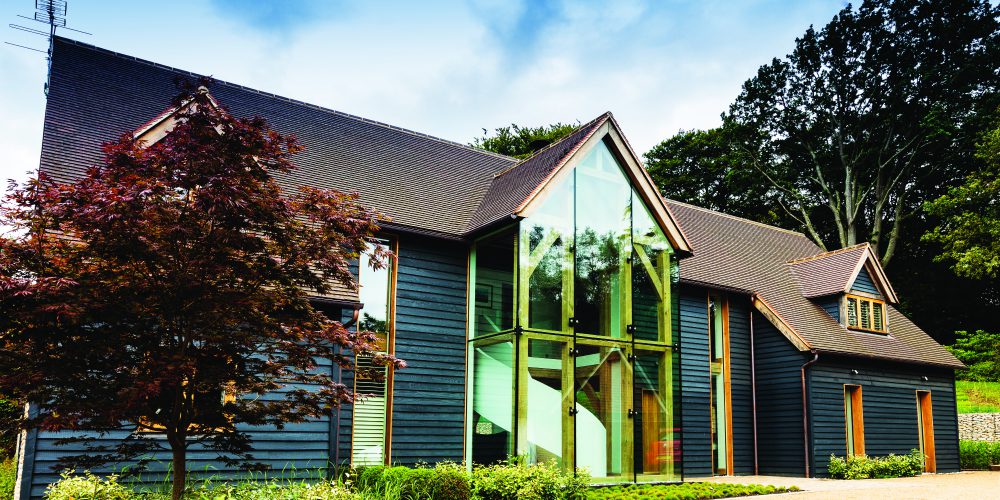
Blog: Glazing a green oak frame
Glazing oak framed windows isn’t easy. Why? Well to start with, green oak (that has been felled for approximately one year) has a moisture content of above 50% so the timber is pretty wet. As I’m sure you know green oak dries over time and moves and shrinks by up to 8% across its width (although the length does not shrink). The key issue for getting glazing right for oak framed windows is to accommodate movement. This means having a flexible system is key to avoid leakage when the oak frame shrinks.
The glazing needs to remain stable in order to operate effectively. For this reason, it is not possible to mount glazing directly into a green oak frame. So, how do you glaze a green oak frame?
Glazing systems for timber frames
Glazing systems for oak frames basically fall into two categories:
- Fitting to rebates in the structural frame (not recommended)
- Fitting sealed units directly to the face of the frame, in combination with inset joinery (recommended)
We strongly recommend that any element that can be non-opening (fixed) is surface mounted. Where openings are required (i.e. doors or windows), complete joinery items are used. We do not recommend doors or windows are hung directly onto the frame.
From a practical point of view, the surface mounted solution can be said to be preferable because it is specially designed to allow for timber shrinkage and movement, and therefore requires less maintenance. This is not to say that other tried and tested methods of glazing will give a problem, just that when the oak frame inevitably shrinks away from the glazed units and joinery, work will be required to ensure that the seal between the two remains intact.
With very large areas of glazing the thermal properties of the system become crucial not just to the glazed area, but to the building as a whole. The surface mounted method delivers much better performance than other systems because it has several preferable attributes;
- Less cold bridging
- Fewer opportunities for gaps to appear
- More wind resistant
- Lower maintenance
Surface mounted glazing also benefits from being more cost-effective because it doesn’t require a separate frame.
Aesthetically, direct glazing is preferable. Where the glazing is surface mounted, the glazed area is the entirety of the opening. An inset joinery frame takes up some of the available space, reducing the glazed area. Surface mounted glazing, therefore allows more light in and presents fewer interruptions to views.
It’s also important to note that the glazing is highly dependent on the quality and craftsmanship of the glazier to ensure the oak framed windows are correctly detailed and installed to a high level of accuracy to effectively seal the building.
